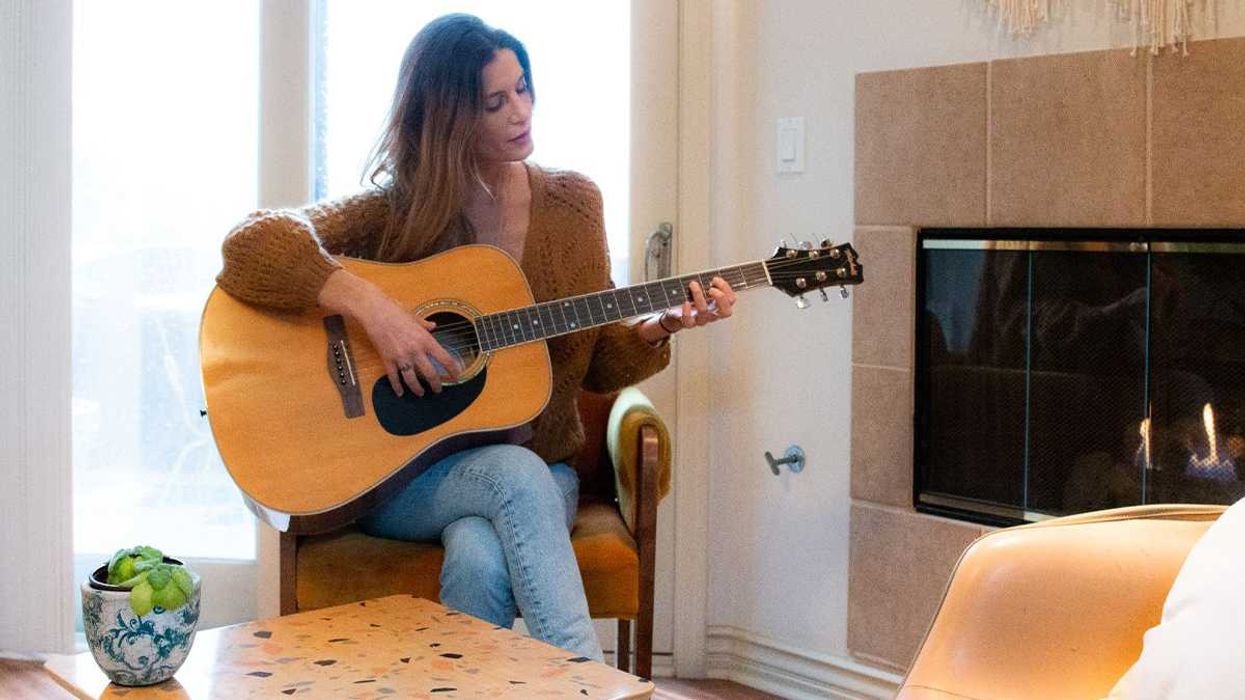America is in the middle of a sleep crisis. According to a recent Gallup poll, 58 percent of American adults do not get the seven to eight hours of sleep a night recommended by the Centers for Disease Control and Prevention. A 2014 study by the National Sleep Foundation suggests that, while only 15 percent of American adults get less than six hours of sleep a night, the overall problem is even worse than Gallup’s poll indicates, with 63 percent of Americans ages 13 to 64 reporting some degree of fatigue.
Until recently, in our “sleep is for the weak” culture, this didn’t rank as a crisis—just something we should stop complaining about and muscle through. But in recent years many have come to appreciate just how vital sleep is in the quest to alleviate depression, manage weight, and focus in the world; the CDC labeled the U.S. sleep deficit a public health concern in 2014, tying fatigue in the American workforce to a significantly increased risk of traffic and on-the-job accidents, obesity, and heart attacks.
Embracing these realities, but fighting habit and intrinsically sleep-hostile aspects of modern life, Americans have increasingly turned to the panacea of the era to improve our nightly rest: technology. Over the past few years, the startup world, crowdfunding sites, and tech exhibitions have exploded with an endless stream of devices offering a better night’s sleep. The array of technologies is dizzying. Wristbands and other wearables offer to track the quality of your sleep via biometrics (and sometimes provide advice). Automatic, adaptive systems shift your sleep environment—from the firmness of your bed to the ambient noises around you to the hue of your night-light—to fit your needs at any moment. Biofeedback systems nullify restless leg syndrome, teeth grinding, and other habit-driven sleep-disturbing activities. You can find lights that mimic sunrise and sunset to ease your natural wake-up cycle. And if you’re looking for something a tad creepier, you can buy matching sets of couples’ pillows meant to ease the stress of sleeping alone when your partner is away by lighting up when his or her head hits the distant companion pillow and reporting his or her heartbeat.
Consumers have bought into this novel industry rapidly and greedily. A study released this year by the Consumer Electronics Association and the National Sleep Foundation reveals that 22 percent of adult respondents (largely but not overwhelmingly young and male) use some kind of sleep technology. Yet the study found that sleep-tech users weren’t, as a collective, getting more sleep than nonusers (they’re averaging 6.5 hours a night), that consistent usage of tech was infrequent, and that a quarter of all tech owners weren’t sure of how to use their devices or what these tools could actually do for their sleep. People, in short, desperately want to use sleep technologies, but it’s difficult to determine which tech, if any, can really help them and how. It’s hard to give advice on the matter, given how subjective and personal sleep is (genetics play a huge role in how sleep-prone we are and what sort of aids we might need). But it is possible, based on accepted sleep science doctrine and the initial findings of surveys like the one by the CEA and NSF, to suggest at least a few types of technologies and systems that will likely be more universally effective and useful than others.
Right off the bat, it’s safe to say that many of the most common and accessible sleep tech—cellphone-based apps often paired with multipurpose fitness-monitoring wristbands that promise to track the quality of your sleep—are probably not the best idea. Any sleep scientist will tell you that one of the biggest problems facing Americans today is our addiction to using gadgets right before bed. The blue light emitted by screens restrains the production of melatonin, the hormone behind our sleep cycle, and puts our mind into wakeful overdrive rather than a gradual slowdown, making it harder to fall and stay asleep. Over half of us use our phones just before falling asleep (more watch TV before bed). But even just sleeping with phones beside us, as the vast majority of young people do, can damage sleep by waking us with beeps and flashing lights, or even just inspiring us to check our devices when we wake up in the middle of the night. Add to this the fact that wristbands are notoriously unreliable (as I’ve argued before on this site), and the fact that most provide data with little contextualization or advice, and you’d probably be better off just removing all the electronics from your room at least 30 minutes before closing your eyes. The CEA/NSF study released this year backs this up, suggesting that technologies that just track your sleep (including but not limited to wristbands and apps), especially when used sporadically, are the lowest-impact, least useful sleep technologies on the market.
Rather than just providing us with raw data, sleep technologies need to help us change our sleep behaviors and the actual, physical quality of our sleep. As in any realm of human experience, behavioral change is something that tech can catalyze, but it is a long-term change that must eventually come from human initiative. So for now, the most effective sleep technologies are likely those that reshape and control your physical sleep environment (the pressure of your bed, ambient temperature, pillow angle and firmness, lighting, and sound) in personalized and dynamic ways. If these technologies happen to also passively measure the quality of your sleep and provide solid or unique behavioral advice, then along with technologically enforced changes to your sleep habits and environment, they can lead to immediate gains in the quality and duration of your sleep. (Consumer Reports suggests that the right sleep environment works better than sleeping pills.)
This all suggests that of all the options on the sleep-tech market right now, the most promising are probably those systems that turn your entire bed and bedroom into a personally reactive smart sleeping space. ReST (Responsive Surface Technology) beds, for instance, fit the bill by automatically responding to your shifting pressure during sleep with the right inflation or deflation. But devices like these are still incredibly, restrictively expensive ($5,000 to $10,000 per unit).
[/vimeo]
Fortunately there are a couple of devices coming onto the market soon which, while lacking the ability to alter the qualities of your bed while you sleep, do control the wider sleep environment and come at a much lower price point. The Juvo system, which just started crowdfunding for its manufacturing stage, can interface with any number of smart devices to automatically set gentle alarms, create ambient noise, disable and re-enable devices, adjust temperatures, and control sun-mimicking, non-blue lights. These features can give you gentle melatonin boosts and downers in the mornings and evenings, all while using an under-mattress sensor to track your biometrics and provide substantive, personalized behavioral advice. Samsung’s SleepSense system, set to roll out worldwide in 2016, offers a similar set of functions, although we’re still learning more about it. Technologies like these have the power to dynamically reshape our sleeping environment to improve the comfort and quality of our rest and provide behavior-changing advice—all for under $200 (not including whatever independent devices you’d like to sync up with them), which may make them one of your best bets and bang-for-your-buck options on the emerging somnolent market.
Yet although some sleep-tech systems are far more promising than others, the entire industry seems to be having a positive effect. Among users of such tech, no matter the device they used, 51 percent of the CEA/NSF survey’s respondents reported that they felt they were sleeping better, even if they were not, on average, sleeping more. This may be tied to the fact that 60 percent of sleep-tech users reported that, no matter what they used or how regularly, just having the tech around made them more aware of their sleep habits, which is already a huge step toward behavioral change. As the market grows, egged on by falling price points (half of nonusers reported that expense was the key restraint to their entering the sleep-tech world), this awareness will likely spread, influencing cultural dialogue on sleep as the technology improves. At some point, we can only hope, we’ll hit a point of critical mass, turning around our wayward sleep habits as a culture with the conceptual and physical assistance of this new, innovative industry.
As we wait for the sleep-tech market to grow and evolve, though, there are still a few things that we can do to immediately improve the quality of our sleep. The most obvious would be to restrict our device usage before bed, perhaps capping nearby outlets to discourage nightstand charging. But if you can’t resist watching a show or sending an email before sleep (and I know that sometimes I can’t), as you wean yourself out of that habit you can at least use screen shields, tinted glasses, or on-device light adjusters to filter out blue light and decrease its impact on your melatonin levels. It’s also worth trying to cut caffeine out of your routine six to nine hours before sleeping, waiting an hour after your last alcoholic drink to go to bed, exercising daily, getting at least 15 minutes of sunlight per day, journaling to relax your mind before bed, and waking up at the same time every morning. All of these options have proven impacts on the quality and duration of your sleep and are far cheaper and more accessible than sleep tech. But most of these non-tech sleep solutions involve difficult behavioral changes—the kinds of shifts that, for some people, just might require the feedback and incentives of emergent technology.
















 Otis knew before they did.
Otis knew before they did.